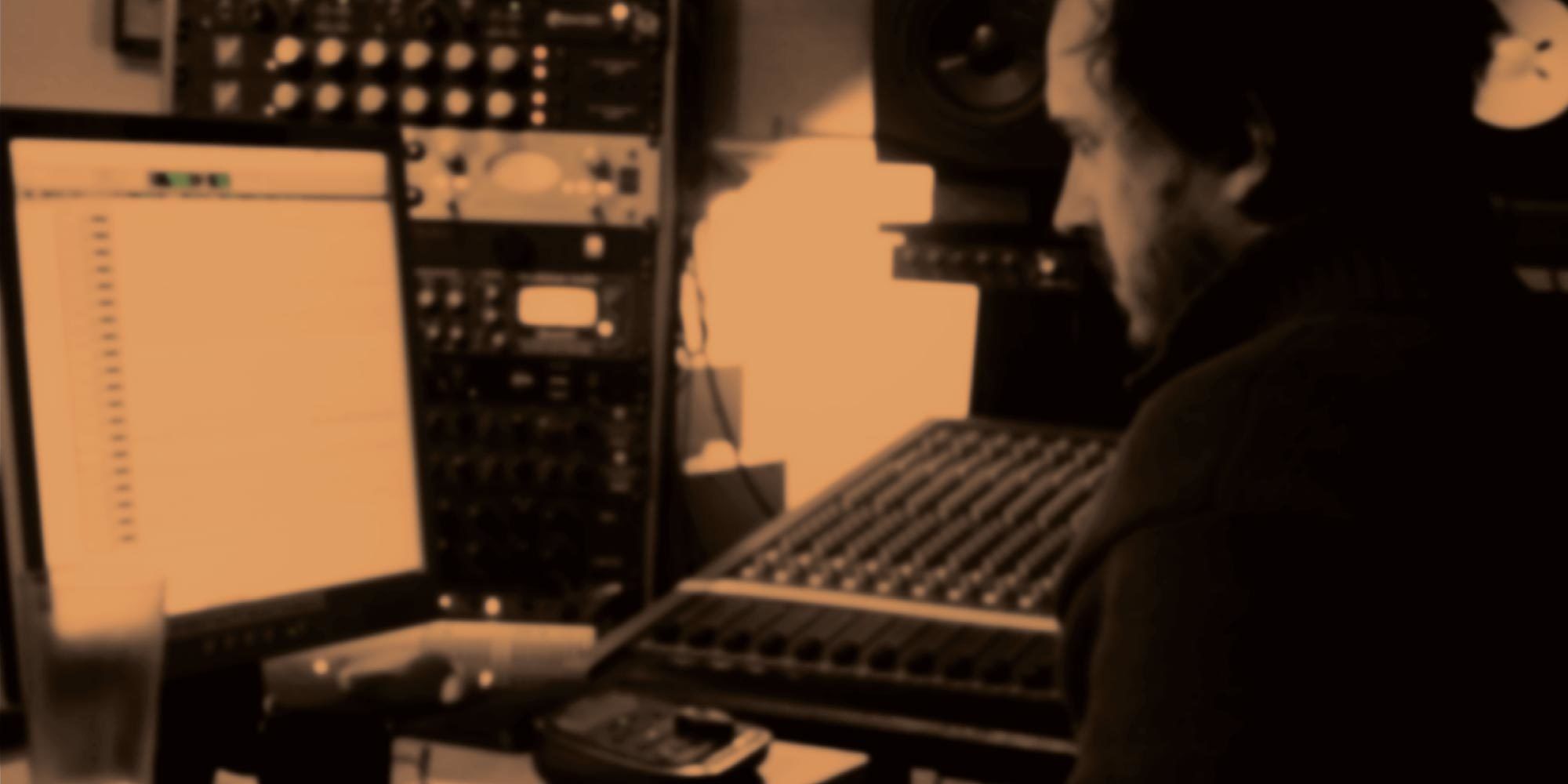
The art of mastering—and undoubtedly, it is an art—abounds with conflicting theories, advice and philosophies so as to leave any musician utterly confused. And believe me, home recording warriors, I am an easy cat to confuse.
What’s more, it may not be possible to witness a mastering session, especially if you submit your material at a distance via the Internet. But if you can, get as much experience as possible watching a mastering engineer at work, and ask lots of questions.
For me, the master of mastering engineers is Mike Hagler, owner of Kingsize Sound Labs in Chicago. Mike has an unusual and successful methodology (more on that in a bit). He is always generous in offering tips, explaining the basics of his setup and showing me how stuff works. And from this, I’ve learned plenty.
Some mastering engineers are quite the opposite, and a) won’t allow you into mastering sessions and b) won’t reveal so-called “trade secrets.” I think that era is quickly disappearing, as anyone can try this at home or via online mastering services. Unless you hire someone as top flight (and expensive) as Bob Ludwig at Gateway Mastering, or Scott Hull at Masterdisk, it’s my non-humble opinion that you have a right to attend the sessions, and learn about what’s going into the music. It’s your money!
How does mastering work, exactly?
A wise mastering guru who sits atop Mt. Musician once explained it to me this way: Think of a cake. You start with raw ingredients, your basic instruments, vocals, etc. These are your tracks. Now combine the ingredients. Literally, you “mix” them together, throw them in the oven, and bake. We do the same with tracks. But without that final layer of icing, the cake will lack something. That is mastering. The frosting on the cake.
Just as with actual baking, it’s possible to lay on that icing too thick, make it too sugary, or simply glop it on and hope for the best. As we discuss approaches, we’ll briefly touch on how you can tell whether the icing is deficient or delicious.
RELATED ARTICLE
What does the mastering process entail?
Here’s where it gets thorny, and approaches definitely differ. In general, several key things happen in mastering.
- It is gently compressed to make the mix more uniform. Often, mastering engineers use something called a multi-band compressor. It treats different EQ ranges individually and, in the hands of a pro, it’s a smart way to go.
- It is smoothed using sophisticated EQs. Often these can reach ranges all the way up to 27kHz. That is way beyond what humans can hear, but some prominent mastering engineers dial in this frequency because it “opens up” a slightly muddy mix. From my experience, that’s spot on.
- Harmonic enhancement is applied (sometimes). A common way to do this is by mastering to tape. Fifteen inches per second commonly brings out low end, while thirty tends to add sparkle. Universal Audio makes a tape emulator plug-in of the Ampex ATR-102. I love it because it provides tasty presets from the likes of Buddy Miller and Stephen Smith.
- Overall volume is raised. This is to increase uniformity and make the mix more exciting. Caution: There is a pronounced trend these days to master songs at maximum volume. I’m dead set against this for two reasons. First, it eliminates the dynamic range of the music, making everything one uniform volume. The music no longer breathes. Second, this kind of mastering causes ear fatigue. It’s worth noting that hit-hungry music moguls fueled this movement - not caring musicians. Maybe it works in the short run. But it has all the subtlety of an avalanche.
- The mix is limited to push down unwanted peaks. Some mastering bibles will insist that limiting should be applied first in the mastering chain. Others say it should be applied last. I’ve had better luck using it last. I've also found that often you’ll want to apply it gently—or not at all.
What should I listen for?
I advise that when mastering a track, ask for multiple finished versions, just as you would mix the vocals up or down 2 dB to determine the best overall mix. As with “fix it in the mix,” don’t apply a “fix it in the mastering” philosophy. Smart tip: Try mastering different mixes you love in a mastering shootout. The one that tickles your ears wins.
As for troubleshooting:
- Did you prep your mix properly? Your engineer will generally recommend something in the -5 dB range. Anything too soft or too loud limits what even the best mastering sensei can do.
- If the mix is heavily limited or compressed, listen for transient hiccups. These are easy to spot. For example, a guitar suddenly gets buried and dives back up, or the character of the drum kit changes without warning. If you’re squashing too much, elements that were once balanced in the mix will slosh in and out in annoying ways.
- Is the mastered version too shrill or boomy? As with mixes, a good way to test this is in multiple environments: a car stereo, a decent home stereo, etc. You shouldn’t feel shy about asking a mastering engineer to make modest tweaks “on the house.” The good guys should be more than willing to do this.
- Did your finished mix have a character to it that was lost in mastering? In that case you may need a minimalist approach, pulling various treatments out (especially limiting). Just make sure that when you assemble tracks for an album, they share a uniform volume so as to sound cohesive.
RELATED ARTICLE
What are my mastering options?
- DIY in your studio. I’m going to go back to what I said earlier. Mastering is an art. If you’re doing it yourself, you’re not going to truly nail it on your first, second or tenth try. You may be proud of your work, but the best mastering engineers I’ve seen dedicate years to the craft. Mastering is as different from mixing as apples from pomegranates. If you’re on a low budget, maybe DIY is an option, but practice and practice and practice before you settle for this. Keep in mind that in mastering studios, it’s common for the reference monitors to cost $5000 or more. Also, learning mastering plug-ins is a matter of nuance. Even a subtle change in one plug-in setting can profoundly influence the sonic color of the next.
- Work with a professional mastering engineer. One way to find the right person is to listen to multiple discs they’ve done. Do you love the sound? The dynamics? Some folks will work far away and so there will be back and forth as you send the tracks via Dropbox or Hightail. Be sure to start with the highest quality mix possible in terms of bit depth and sample rate. Leave it to the mastering engineer to funnel it down to industry standard, which is 16 bits at a 44.1 kHz sample rate.
- Use a mastering engineer who works entirely “in the box” via DAW. This works just fine in many cases, though tube equipment and tape machines can certainly (though not necessarily) up the game. And some engineers will mix and master simultaneously, something Mr. Hagler does because he can hear the end result more accurately. You might feel more comfortable working with a finished mix first, but if your mix engineer has a great mastering track record, don’t be afraid to give it a shot.
- Algorithmic mastering. Yes, machines can now master tracks on their own (I’m waiting for the beer bottles to fly at my head…).
Don’t get your Spandex suit in a bunch over this. The brand new technology offers a cost-effective option for this who can’t afford $100 an hour or more in a pro mastering suite. One such service is LANDR, a Montreal-based company that masters a track quicker than you can sing “Big Bottoms” by Spinal Tap.
The folks at LANDR will be the first to tell you that the process won’t equal top-flight mastering. But from what I can hear, it can come pretty damn close—even despite of a few tech bugs that were easy enough to solve. Here are the benfits:
- LANDR’s mastering algorithm was created by experts. The team includes leading sound engineers, signal processing specialists, record label owners, musicians—and (!) an astrophysicist. So the artificial intelligence behind it is informed by real human intelligence.
- Boy, is this cheap. You can master unlimited mixes in WAV format for $39 a month, and individual tracks for $9.99. LANDR also has mastering options in MP3 format. But I’d master in WAV for a highest-quality archive copy. You can dump it down to MP3 on your own.
- Boy, is this fast. It took longer to upload the track (1:04) than to hear a sample result (35 seconds). The masters also come in an uncompressed format that’s ideal for Soundcloud, YouTube, and other online showcase spots.
Here are the drawbacks. To start your account you need to answer a confirmation email. Mine went to a junk folder—and I’m on Gmail, which lets almost everything through. It would be nice to see a website note saying: “Be sure to check your junk or spam folder in case your email doesn’t arrive right away.” After hearing my mastered version, I had to register an account—and master the track again. It’s kind of a tease, but again, no biggie. The tracks master so fast. Though I paid for a WAV file mix, I was sent an MP3 mix at one-seventh the file size. I had to email tech support to get the problem resolved. Revisiting my account 20 minutes later, I found the WAV file and I got to keep the MP3 as a freebie.
The verdict? The LANDR result is sonically far superior to what the overwhelming majority of home studio warriors can achieve at home. Since I could also choose between three mastering intensities, each progressively louder and more forceful, there’s room to experiment and have fun. (I chose high intensity.)
Here you can listen to my unmastered mix—a crude little instrumental that sounds like “Pet Sounds” on acid (or antacid). The LANDR master is right beside it. What do you think?
Unmastered Mix:
LANDR Master:
It would be fascinating, or maybe embarrassing, to go back later and hear what I could achieve in my studio versus what LANDR concocts in its secret digital lair. If I were blindfolded, who would win the shootout? Louie or LANDR? Man or machine?
ABOUT THE AUTHOR: Lou Carlozo
Lou Carlozo, Reverb’s Home Sweet Home Recording columnist, is a studio musician, producer and mix engineer based in Chicago. After almost three years mastering many musical projects, he refuses to call himself a mastering engineer—but gives it his very best. If you need help with a musical project, contact him here.


